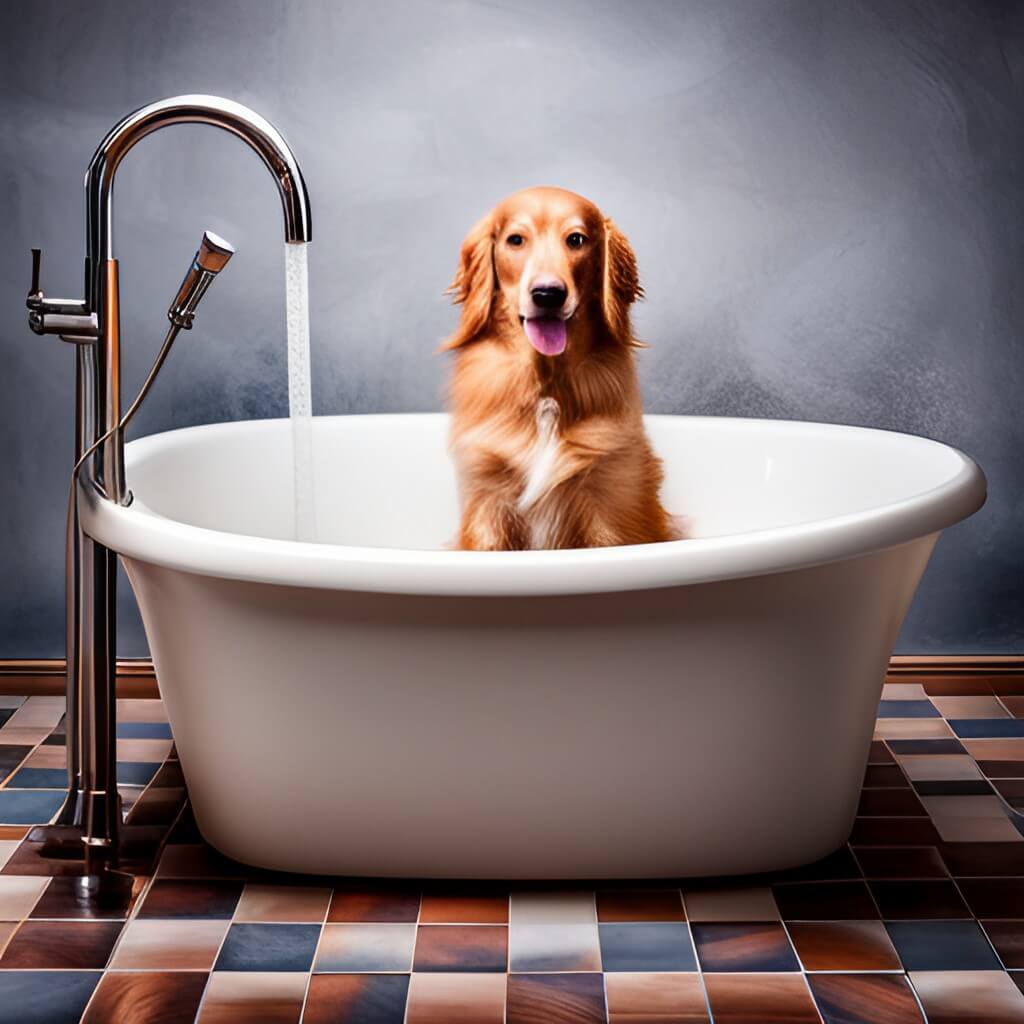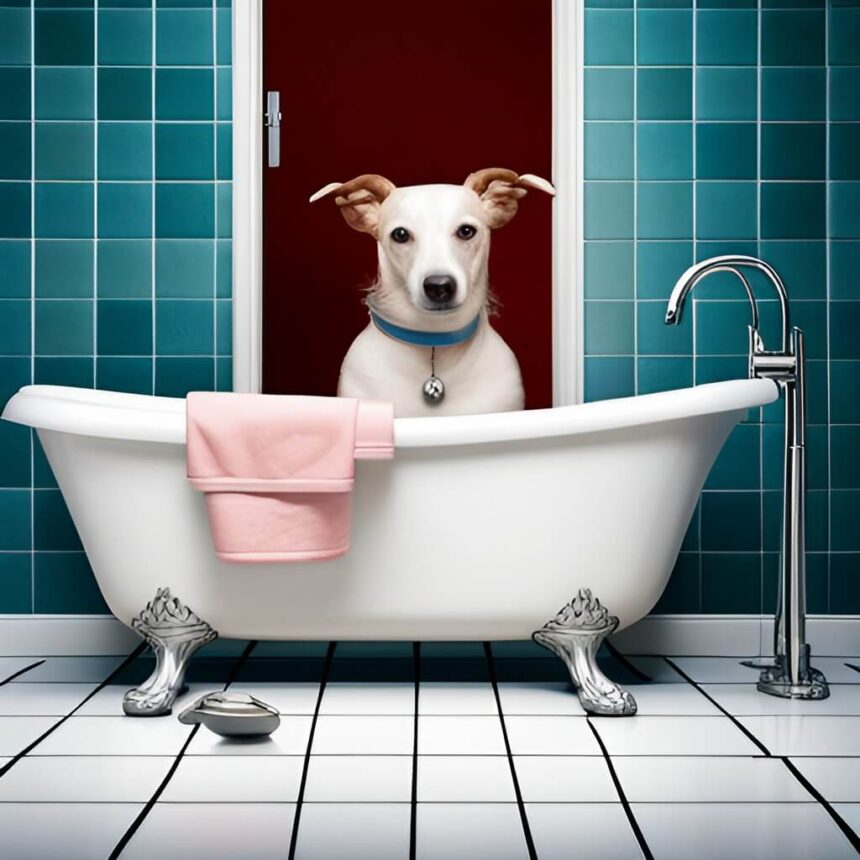Table of Contents
ToggleBathe a Dog Who Hates Water
If you are a loving dog owner, then you probably understand the importance of maintaining proper hygiene for your furry friend. Bathing your dog, however, can be quite a challenging task if your dog doesn’t like water or is afraid of it. But don’t worry, there are ways you can help your dog overcome their fear and make bath time a less stressful experience.
In this blog post, we will provide you with tips on how to bathe a dog who hates water.
Build Positive Associations
One way to help your dog get over their fear of water is to associate it with positive things. Start by introducing your dog to water in a controlled and safe environment.
Use a little bit of water in a small tub or sink, and add some treats to the water. Let your dog see, smell, and taste the treats, and eventually, they will start associating water with something positive.
Once your dog associates water with treats, you can introduce them to a bigger tub or the shower.

Use a Calming Voice
If your dog is anxious or afraid, they will pick up on your energy. If you’re anxious, your dog will be anxious too. Make sure to use a calming voice and speak to your dog in a reassuring tone. This will help to calm your dog down and let them know that everything is okay.
When you speak in a calm and soothing manner, your dog will feel more relaxed and at ease.
Provide Comfort and Reassurance
Dogs are sensitive creatures and can easily pick up on our emotions. If you notice that your dog is feeling anxious or stressed while in the water, try to provide comfort and reassurance.
This can be done by gently petting them, speaking to them in a soothing voice, or even offering treats if they are comfortable taking them in the water.
By providing this support, your dog will begin to associate being in the water with positive experiences and may become more confident over time.
Start Slowly
It’s important to take things slow when introducing your dog to swimming. Just like humans, dogs need time to get used to a new environment and activity. Begin by letting your dog wade in shallow water and gradually increase the depth as they feel more comfortable. You can also use a life jacket for added safety and security, especially for first-time swimmers.
Encourage with Toys
For some dogs, swimming may not come naturally. They may be hesitant or scared to enter the water on their own. In situations like this, it can be helpful to encourage them with toys or items they enjoy playing with on land. This could be a favorite ball, frisbee, or even their favorite stuffed animal. By incorporating something familiar and fun into the water, your dog may become more eager to swim.
Be Mindful of Water Conditions
Just like humans, dogs can be affected by water conditions. It’s important to be mindful of the temperature and cleanliness of the water before allowing your dog to swim. If the water is too cold, it can lead to hypothermia and if it’s too dirty, it could cause skin irritations or infections. Also, be aware of any potential hazards in the water such as strong currents or sharp rocks.
Take Breaks
Swimming can be a physically demanding activity for dogs, especially those who are not used to it. Make sure to take breaks and allow your dog to rest and catch their breath during swimming sessions. This will help prevent exhaustion and ensure that they don’t overexert themselves.
Use a Special Shampoo
There are several dog shampoos available that are specifically designed for dogs who don’t like water or are afraid of it. These shampoos can help soothe and calm your dog, making it easier for you to bathe them.
Additionally, these shampoos can be used without water, making them perfect for dogs who don’t like getting wet. They are usually in the form of dry shampoo or foam that can be applied directly to your dog’s coat and massaged in. This method not only saves you time but also reduces the stress for your dog.
Some of these special shampoos contain natural ingredients like lavender or chamomile, known for their calming properties. Others may have a mild sedative effect, which can help relax your dog during bath time. It is important to read the label and consult with your veterinarian before using any product on your dog.
Moreover, using a special shampoo can also help prevent skin irritation or allergies caused by traditional water-based shampoos. These products are gentler on your dog’s skin and coat, making it suitable for dogs with sensitive skin.
affiliate links
Make Bath Time Short and Sweet
Dogs have a short attention span, so it is important to keep bath time short and sweet. Bathing your dog for too long can cause them to become bored and agitated.
Keep the bath time to an average of 5-10 minutes, and make sure to rinse your dog well to remove all the soap and shampoo.
Reward Your Dog
Finally, it is essential to reward your dog after a successful bath. This can be in the form of a treat, a new toy, or just a lot of praise and affection. Rewarding your dog will help them associate bath time with something positive, making future baths easier and less stressful.
A common misconception is that dogs do not enjoy being in water. However, many breeds were originally bred for water activities such as retrieving and hunting. With proper training and positive reinforcement, most dogs can learn to love the water.
Bathe a Dog Who Hates Water
Bathing a dog who hates water can be a daunting task, but with patience, persistence, and the tips provided in this blog post, you can make bath time a more enjoyable experience for both you and your furry friend. Whether your dog simply dislikes getting wet or has had a negative experience with water in the past, there are ways to help them overcome their fear and learn to tolerate baths.
Remember to always use positive reinforcement, keep bath time short, and reward your dog for a job well done. With time, your dog may even learn to love bath time!












